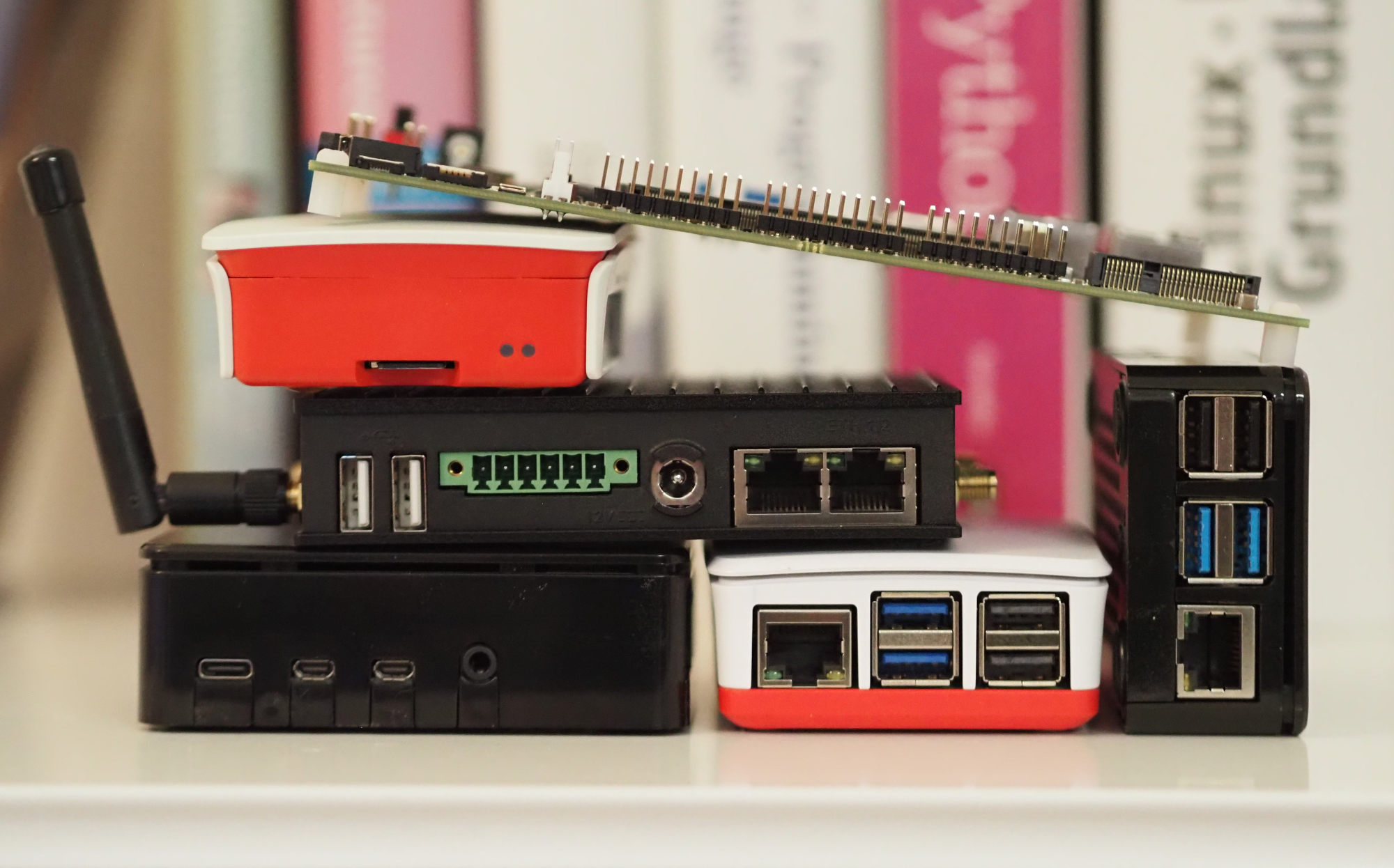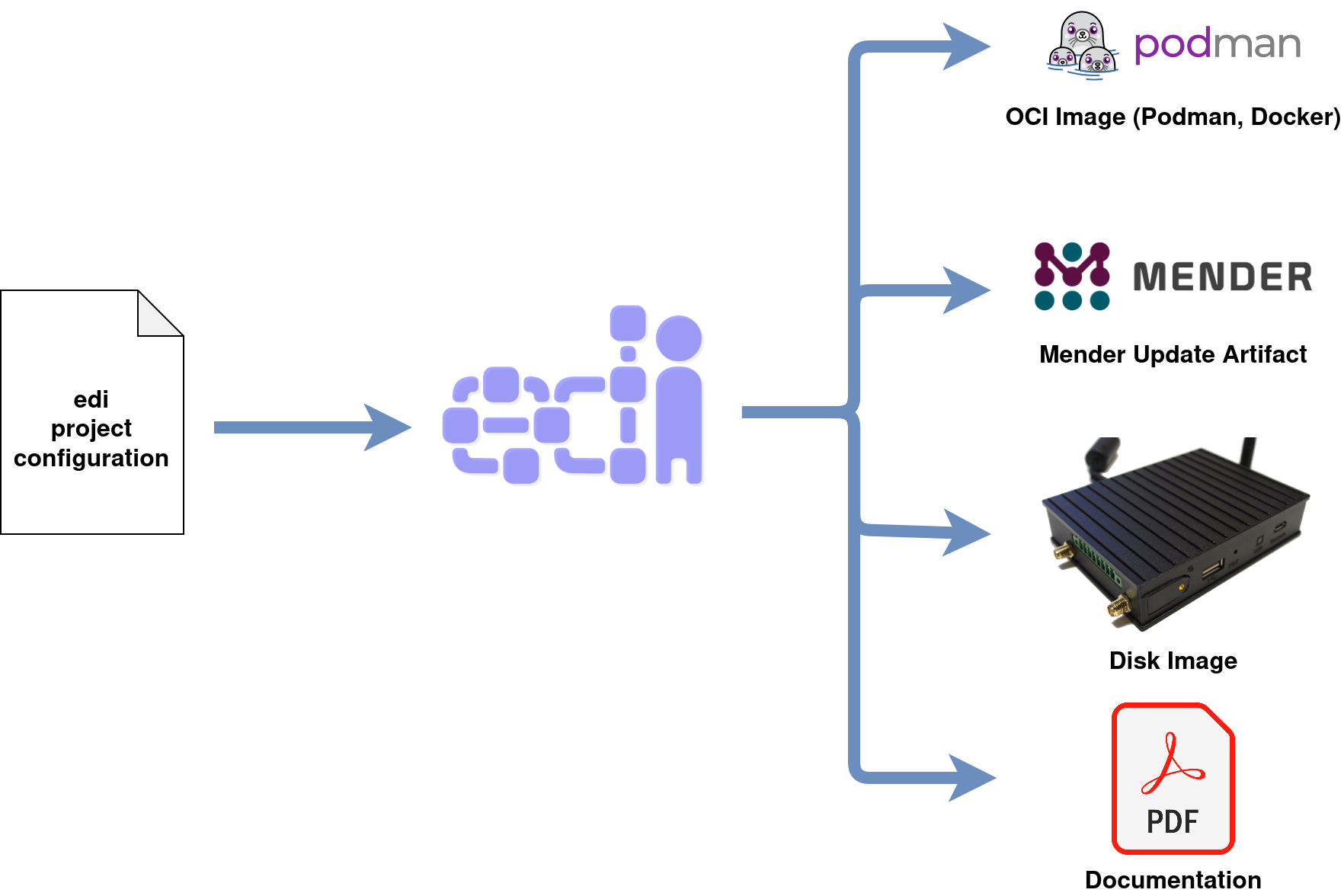Rootless v2 Workflow for Debian Trixie
As announced earlier this year edi has adopted a new workflow.
In the meantime the whole fleet of devices supported by edi project configurations can benefit from this new workflow:
- Raspberry Pi 2, 3, 4, 5: Debian trixie, edi-pi
- Compulab IOT-GATE-iMX8: Debian trixie, edi-cl
- Variscite VAR-SOM-MX8M-NANO: Debian trixie, edi-var
The most notable change is the switch from LXD to Buildah and Podman (or Docker if preferred):
All project configurations are now based on Debian trixie which is currently in a state called “testing”. Due to the
lack of timely security updates Debian trixie is not yet suitable for a rollout, but it is already fairly stable and a
good match for starting a new development based on a very recent software stack. If you want to play it safe, then all
the above edi project configurations have a branch called debian_bookworm that delivers Debian bookworm based
artifacts by making use of the v1 workflow. edi will of course keep supporting the v1 workflow as longevity is a key
topic for embedded devices.
The new v2 workflow uses a number of new tools that must be provided in a recent version. Therefore, all trixie project configurations will cowardly refuse to work if you do not have at least Debian bookworm or Ubuntu 24.04 as host operating system.
The OS tweaking is done using a single Ansible playbook that can be extended in a modular manner using Ansible collections such as debian_setup.
The Mender integration has been upgraded to the modular C++ client.
Outlook
The v2 workflow is the recommended setup for any new project. Also existing projects can be switched over to the v2 workflow within a reasonable amount of time. Even complex image scenarios involving encrypted disks can be done in a completely rootless manner thanks to LUKS2. Distrobox will definitely improve the developer experience while the OCI images will simplify the CI/CD pipeline. The integration of Ansible collections will increase reusability.


Leave a comment